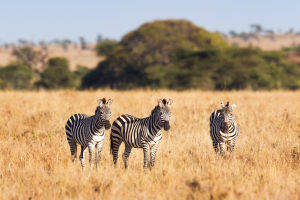Who doesn’t enjoy witnessing one of these winged beauties in flight? From their brightly colored bodies to the effortless motion that seems in sync with some unheard symphony, butterflies are an insect each of us can appreciate. But how much do we know about them? This list includes 5 cool facts that are sure to make you think about butterflies in a whole new way.
1. Butterflies can’t fly if they’re cold
Butterflies actually need to maintain a surprisingly high body temperature if they want to fly around. For a butterfly to operate at an optimal level, its body temperature needs to be around a staggering 30°C (86°C). If it is too cold, the butterfly will be rendered completely immobile. Maintaining a high internal temperature is a tough task for an insect with cold blood. Butterflies warm up by ‘basking’ in the sun, staying still on vegetation with their wings spread in direct sunlight. Their wings contain a network of small capillaries and this activity heats the blood in butterflies’ veins, allowing for transport of warmed blood throughout their small bodies.
2. Butterfly wings are actually transparent
First of all, butterflies don’t have just two wings, they have four (made up of two hindwings and two forewings). These wings are made up of two layers of the protein chitin, sandwiching a layer of capillaries. The chitin is covered with modified hairs called ‘scales’ that contain pigments (such as our very own melanin, found in brown butterflies) that reflect light in different colours. Over time, some of these colourful scales will rub off, exposing the transparent membrane. It is a myth that rubbing these off by hand will prevent butterflies from flying, however it might leave the translucent membrane more prone to tears, which might hinder flight. Butterfly wings are very delicate so make sure to avoid touching them if possible.
3. Butterflies taste with their feet
Butterflies have senses of taste, smell and touch and their taste receptors are actually located on their feet. More precisely, they use chemoreceptors on the tarsi to detect different chemicals when they land on flowers and plants. Actually, the reason for these sensors are more complex than just detecting sweet nectar. A female butterfly will use its sensors to determine whether its caterpillars will be able to eat the leaves they have landed on. Using its receptors, female butterflies can detect both attractive and toxic traits of plants in order to choose the most suitable plant for their eggs. For this reason the taste sense in some species of butterfly is only switched on in females.
4. Butterflies don’t actually eat anything
That’s right, butterflies don’t eat anything and don’t possess the mouth organs to do so. They can only drink, using a long protruding tube called a proboscis. In fact, this is one of the first parts of a butterfly’s body to develop during metamorphosis. You may see butterflies fresh from metamorphosis testing out their proboscis by uncoiling it and coiling it back up again repeatedly. Butterflies mostly drink nectar as you would imagine, but they also drink from muddy puddles, rotten fruit and even dead animal carcasses. Nectar provides them with the glucose they need for energy, but other liquids are necessary at times to provide them with minerals and salts. Interestingly, they don’t defecate either. Although caterpillars eat almost constantly and excrete frequently, butterflies do not have the means to do so. Occasionally a butterfly drinks too much nectar and sprays a fine liquid from their abdomen, but this liquid is almost pure water.
5. Butterflies’ pollinating capabilities are even more crucial to ecosystems than you may think.
We know that bees are excellent pollinators, but butterflies are pretty impressive sidekicks. This is partly because butterflies pollinate cotton flowers, a part of the cotton plant that bees naturally do not frequent, thus boosting cotton harvest. This type of pollination—where multiple insects work to pollinate different portions of the same plant—is called pollination complementarity, and it occurs with other plants too, like almonds.


